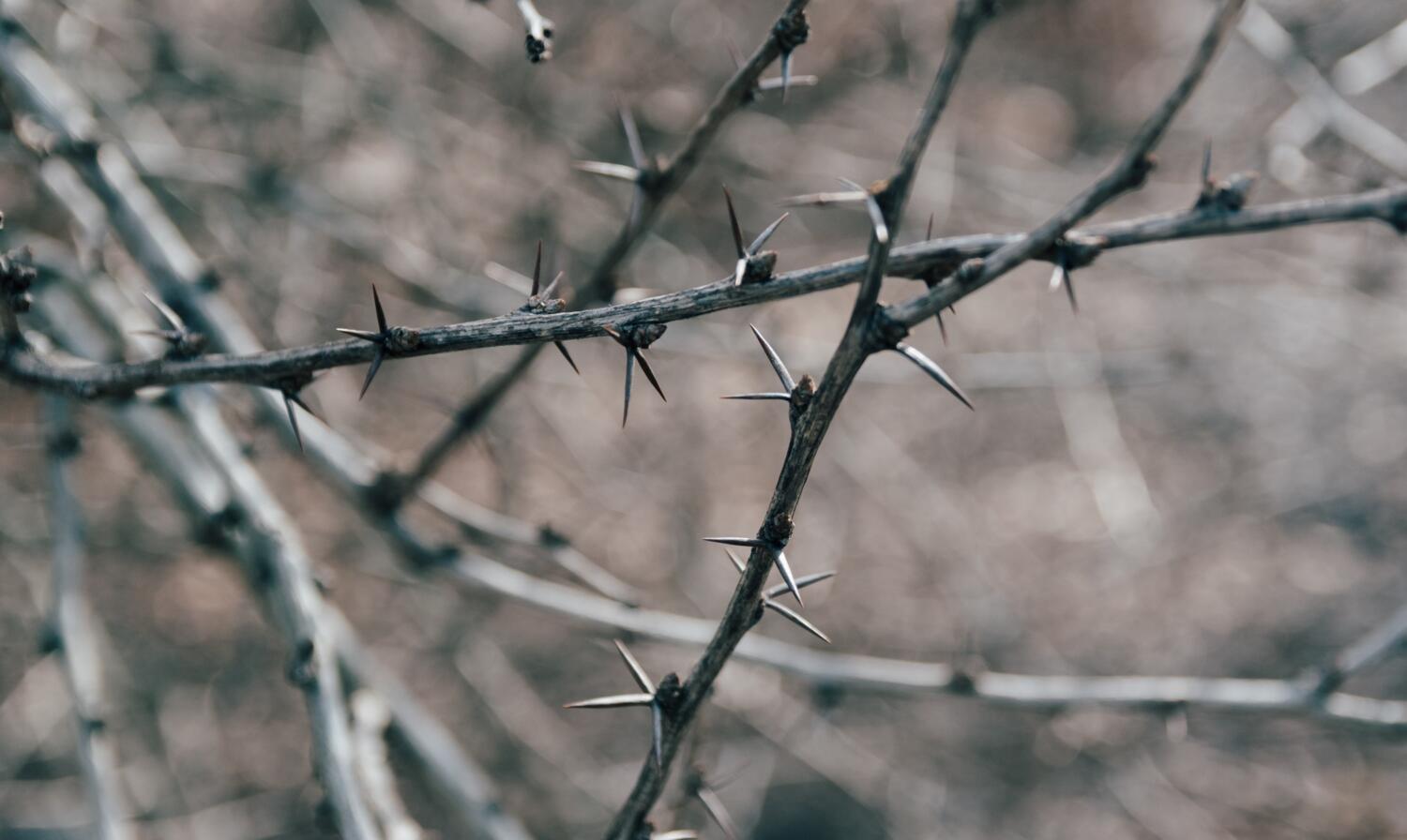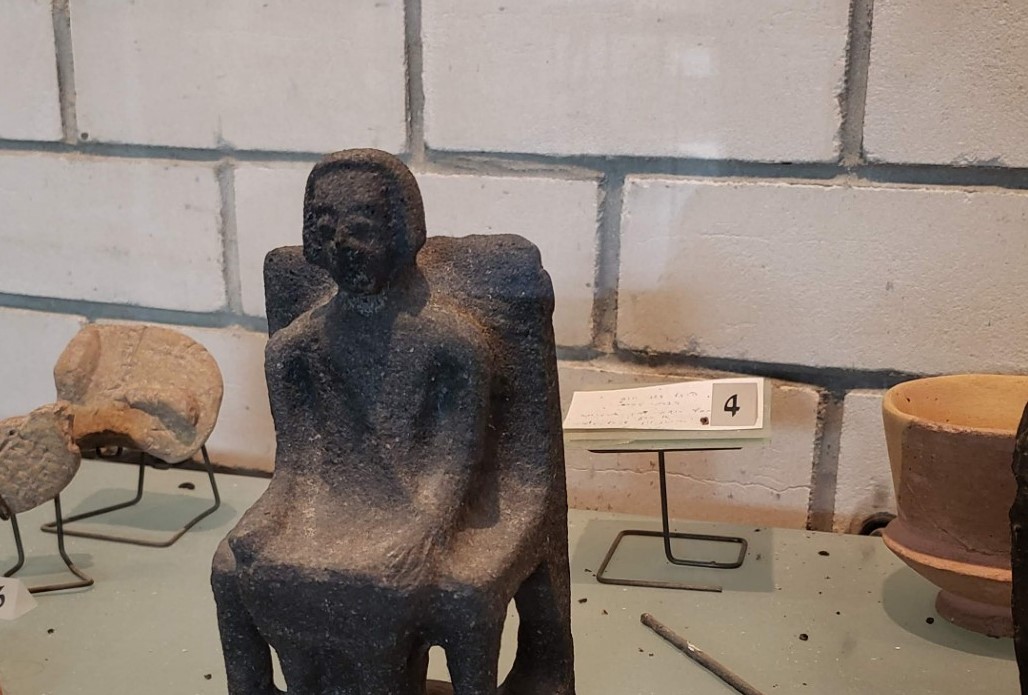Digging Deeper: A Crown of Thorns
Author: Mr. Kenneth Frank | Faculty in Theology, Living Education
Estimated reading time: 8 min.
Did you know that Jesus wore a crown before He died?
Christians understand that when He returns to take command of His kingdom He will be adorned with many crowns (Revelation 19:12). Even before He died, He was crowned and proclaimed king. However, it was not a proclamation by believers. Additionally, this crowning relates to the curse upon the earth from Genesis 3. What type of crown was this and how does it relate to the curse? This Digging Deeper recounts this event to discover its spiritual significance.
Our focus verse is: “And when they had platted a crown of thorns, they put it upon his head, and a reed in his right hand: and they bowed the knee before him, and mocked him, saying, Hail, King of the Jews!” (Matthew 27:29 KJV throughout). This heartless act by the Roman soldiers as executioners is also recorded in Mark 15:17; John 19:2; John 19:5.
This scene occurs not long before Jesus was taken to Calvary to be crucified. Because of their military experience, these hardened and brutal Roman soldiers placed little value on human life. They mocked this helpless Jew who had been turned over to them for crucifixion by the Roman governor, Pilate.
A crown of torture
Before capturing the spiritual significance of this encounter, it is necessary to examine a couple of words used in this verse. Gary Everett’s Study Notes on the Holy Scriptures claims the word platted comes from the “The Greek verb πλέκω (G4120) which means, ‘to twine, braid.’ This word is only used three times in the New Testament, and only in reference to this crown of thorns” (e-Sword 13.0.0). This organic crown was braided into the shape of a victor’s laurel. Ethelbert Bullinger in his Companion Bible attests that the Greek word for crown is “Stephanos (used by kings and victors); not diadema, as in Revelation 12:3; 13:1; 19:12″ (Ibid.). Victors’ garlands in Greco-Roman games were woven from leafy twigs of local plants, shrubs, or trees.
The NIV Cultural Backgrounds Study Bible provides pertinent historical background: “Hellenistic [Greek culture] vassal princes wore garlands; soldiers may have used an available shrub such as acanthus to weave a wreath for Jesus. Imitating Hellenistic garlands, the soldiers may have intended the thorns to point especially outward, but some of the thorns would nevertheless turn inward, scraping the scalp. Scalp wounds bleed particularly profusely” (Tecarta Bible Apps). David Guzik’s Enduring Word Commentary additionally notes: “Kings wear crowns, but not crowns of torture. The specific thorn-bushes of this region have long, hard, sharp thorns. This was a crown that cut, pierced, and bloodied the head of the King wearing it” (e-Sword 13.0.0).
Royal diadems were much more elaborate, as Albert Barnes’ Notes on the Bible explains: “A crown was worn by kings, commonly made of gold and precious stones. To ridicule the pretensions of Jesus that he was a king, they probably plucked up a thornbush growing near, made it into something resembling in shape a royal crown, so as to correspond with the old purple robe, and to complete the mockery” (e-Sword 13.0.0). As John Bengel’s Gnomon New Testament asserts, “They treated Jesus as a madman who fancied Himself a King” (Bible Analyzer 5.4.1.22).
Thorns and the curse
Various suggestions have been offered over the years as to which thorny bush was chosen for this crown. However, Henry Alford’s The Greek Testament cautions: “It does not appear whether the purpose of the crown was to wound, or simply for mockery—and equally uncertain is it, of what kind of thorns it was composed…Some flexile shrub or plant must be understood—possibly some variety of the cactus or prickly pear” (e-Sword 13.0.0).
The Biblical Illustrator by Joseph S. Exell adds: “According to the Rabbis and the botanists, there would seem to have been from twenty to twenty-five different species of thorny plants growing in Palestine; and different writers have, according to their own judgment or fancies, selected one and another of these plants as the peculiar thorns which were used upon this occasion. But why select one thorn out of many?” (e-Sword 13.0.0). However, there is a more substantial significance.
The NET Bible provides a hint of the spiritual significance of this act: “In placing the crown of thorns on his head, the soldiers were unwittingly symbolizing God’s curse on humanity (cf. Genesis 3:18) being placed on Jesus. Their purpose would have been to mock Jesus’ claim to be a king; the crown of thorns would have represented the ‘radiant corona’ portrayed on the heads of rulers on coins and other artifacts in the 1st century” (e-Sword 13.0.0).
This source asserts that apart from the specific thorn employed, more important is the connection of thorns to the first human sin described in Genesis. When one reads the punishment God imposed after this sin, it becomes plain that God cursed the serpent and the ground from which Adam and Eve would grow their food. Instead of the unhindered harvest of luscious fruits and vegetables, the ground would yield thorns and thistles to impede their efforts (Genesis 3:14, 17). Because of Jesus’ future sacrifice for sin, God did not curse Adam and Eve directly though they would suffer sin’s consequences in painful childbirth and laborious work (Genesis 3:16-19).
Curse from sin
Joseph S. Exell’s The Biblical Illustrator comments on the relationship of thorns to sin: “It may well be that more than one kind of thorn was platted in that crown: at any rate sin has so thickly strewn the earth with thorns and thistles that there was no difficulty in finding the materials, even as there was no scarcity of griefs wherewith to chasten Him every morning and make Him a mourner all His days” (e-Sword 13.0.0).
Matthew Henry’s Commentary on the Whole Bible establishes this spiritual significance: “[1.] Thorns came in with sin, and were part of the curse that was the product of sin, Genesis 3:18. Therefore Christ, being made a curse for us, and dying to remove the curse from us, felt the pain and smart of those thorns, nay, and binds them as a crown to him (Job 31:36); for his sufferings for us were his glory” (e-Sword 13.0.0).
Jesus vicariously suffered by bearing on Himself this curse, represented by the thorns. John Trapp’s A Commentary on the Old and New Testaments elaborates: “Christ, by wearing this crown of thorns, the firstfruits of the curse, took away the sin and curse of all his people; who must therefore, by their obedience, set a crown of gold on his head, Song of Solomon 3:11…” (e-Sword 13.0.0). Christ’s crown of thorns will be replaced by His bejeweled royal diadems (Revelation 19:12) when He sits upon the throne of David (Luke 1:32).
More lessons of the thorny crown
Matthew Henry goes on to explain two more significances of the thorns of Genesis: “[2.] Now he answered to the type of Abraham’s ram that was caught in the thicket, and so offered up instead of Isaac, Genesis 22:13. [3.] Thorns signify afflictions, 2 Chronicles 33:11. These Christ put into a crown; so much did he alter the property of them to them that are his, giving them cause to glory in tribulation, and making it to work for them a weight of glory.” (e-Sword 13.0.0). When Abraham was instructed to sacrifice his son, Isaac was a type of Christ, and Abraham in this action was a type of the Father.
Bob Utley’s You Can Understand the Bible takes this significance a step further: “The ‘crown of thorns’ may allude to (1) mocking Jesus’ claim to kingship or (2) the curse of Genesis 3:18 (cf. Galatians 3:13). Thorns are a symbol of rejecting the gospel (cf. Hebrews 6:8)” (e-Sword 13.0.0). Those who reject Jesus’ sacrifice for them will continue to experience the effects of the curse in their efforts to save themselves.
This mockery of Jesus as a king did not involve only these Roman soldiers, as A New and Concise Bible Dictionary by George Morrish explains: “Though applied to His sacred head by the rough soldiers, it was connived at by Pilate, who presented the Lord in this garb to the Jews, but which only drew forth their cry, ‘Crucify Him.’ We read that the robe was taken off Him, but nothing is said of the crown, so that He may have worn that on the cross” (Bible Analyzer 5.4.1.22). If this was the case, during His crucifixion Jesus suffered not only the nails of the cross and the spear wound of the Roman soldier but also the crown of thorns jammed into his skull.
Jesus’ crown of thorns should instill in all believers a terrifying awareness of the consequences of their sins. Jesus willingly took upon Himself this curse so that they may be forgiven and enter His kingdom as kings and priests (Revelation 1:6; 20:6). Each of these two offices provides distinguishing headwear to signify leadership. Priestly miters and kingly crowns will likely be worn by those Jesus has saved and transformed (Exodus 28:40-29:6). This results from Jesus bearing their crowns of thorns.

Kenneth Frank was born and raised in New Jersey, USA, and attended Ambassador College, graduating in 1973. He served in the Canadian ministry from 1973-1999, after which he returned to the USA to pastor churches in Maryland, Virginia, and North Carolina for 15 years. Having earned a BA degree from Ambassador College he later earned a MA degree from Grand Canyon University before being assigned to the Charlotte office to teach at Living University, now Living Education. Currently, he teaches the Survey of the Bible course to the on-campus students and writes the Digging Deeper column for our online Bible study program. He is married, has four children, and seven grandchildren.









